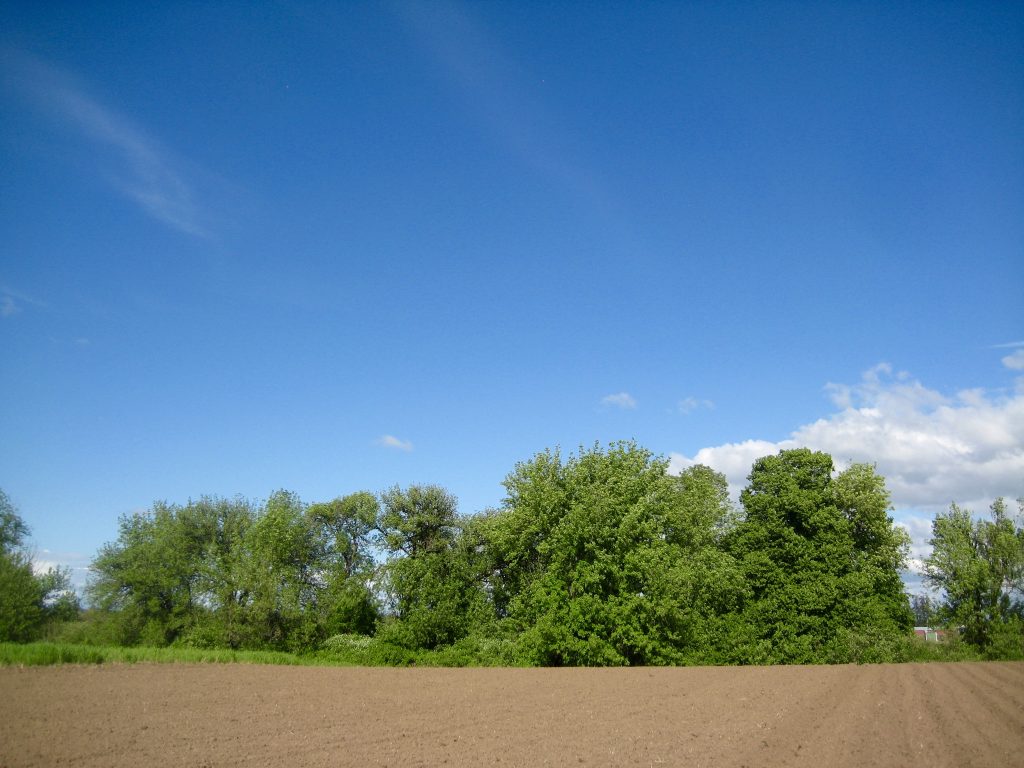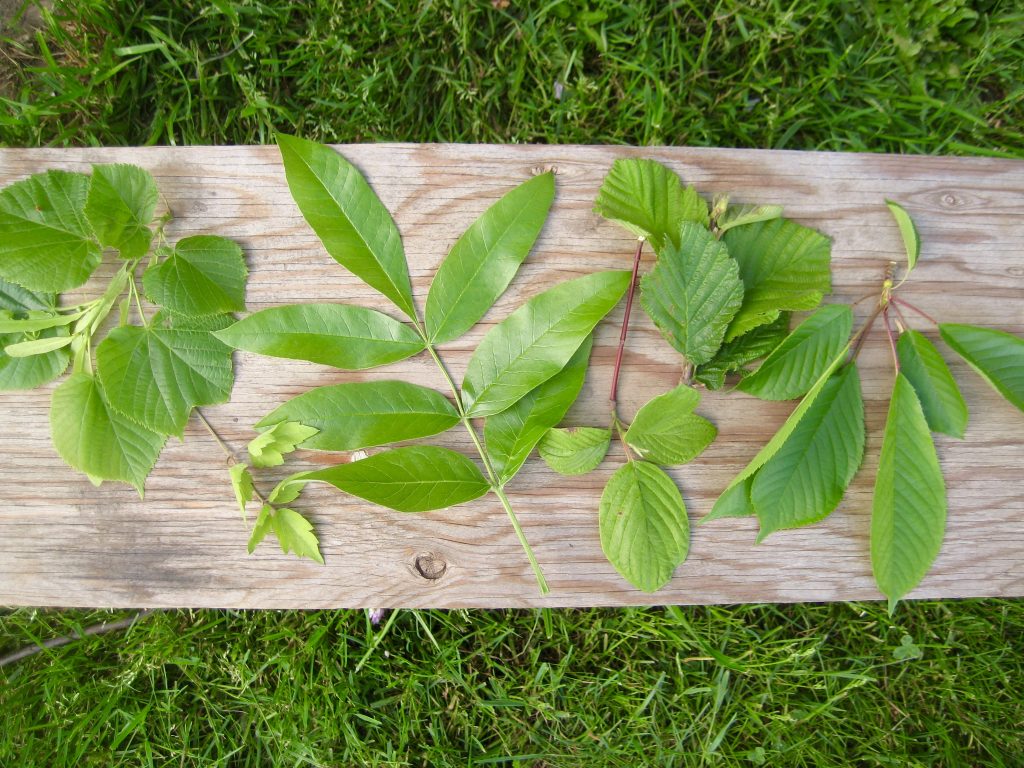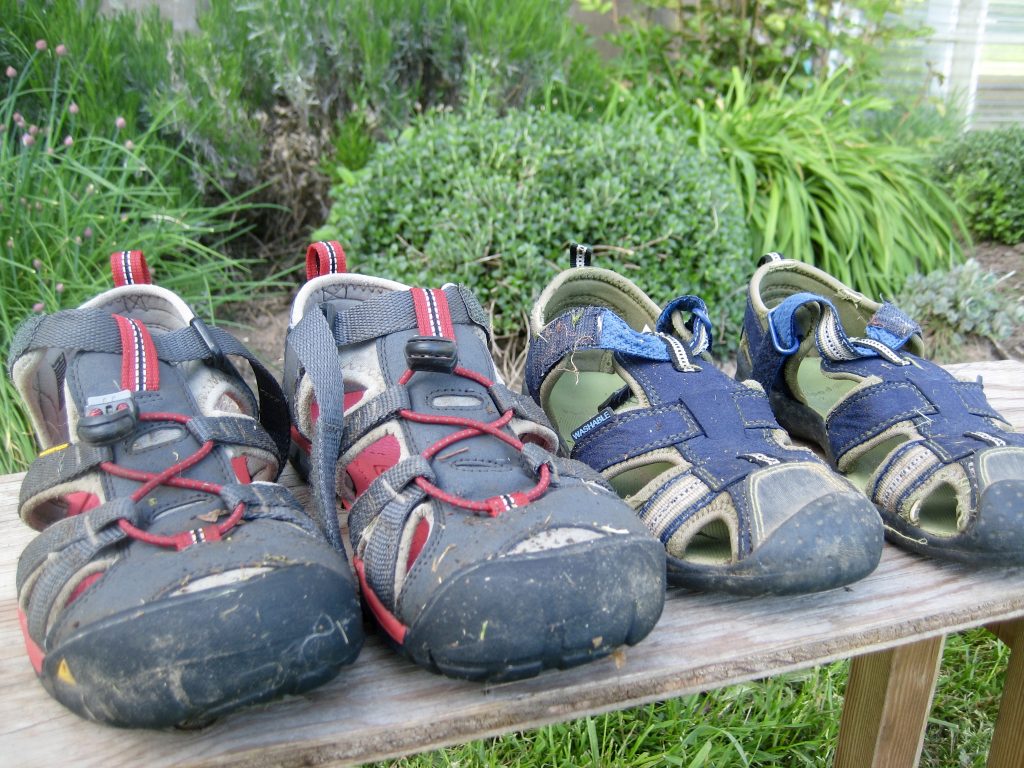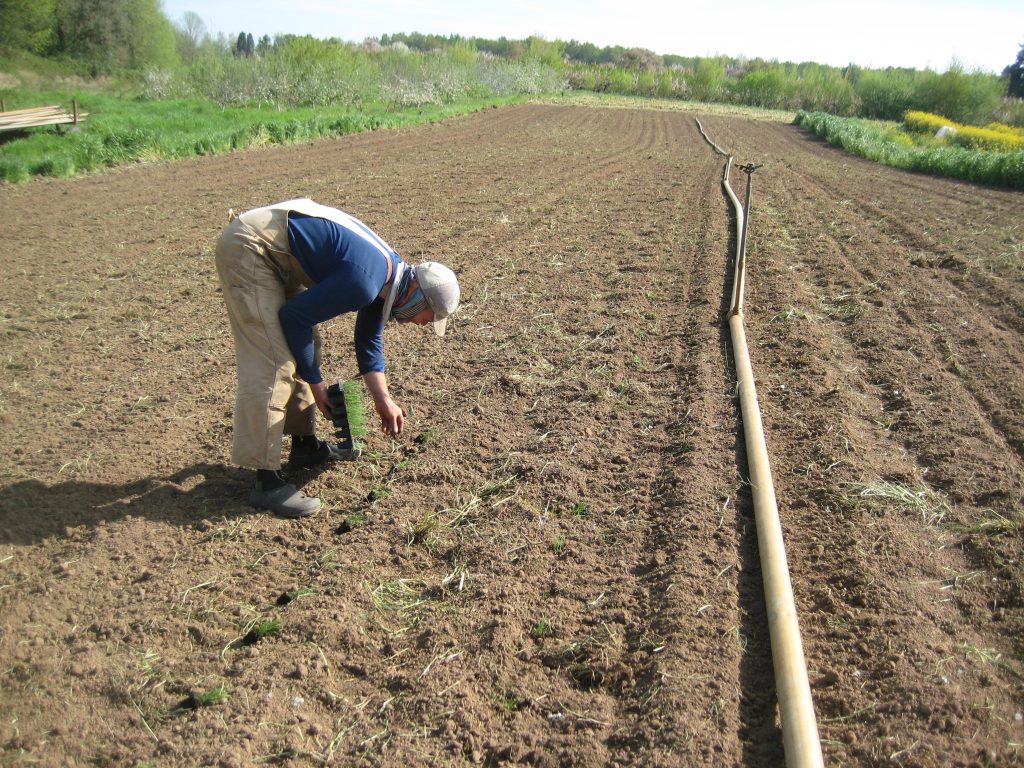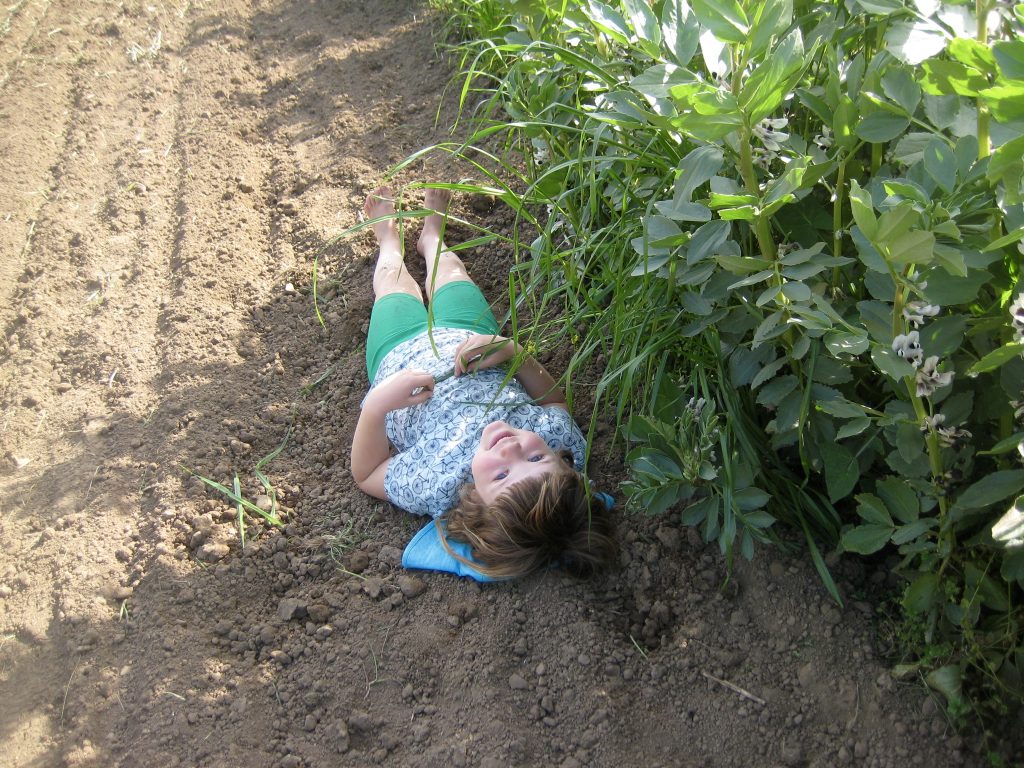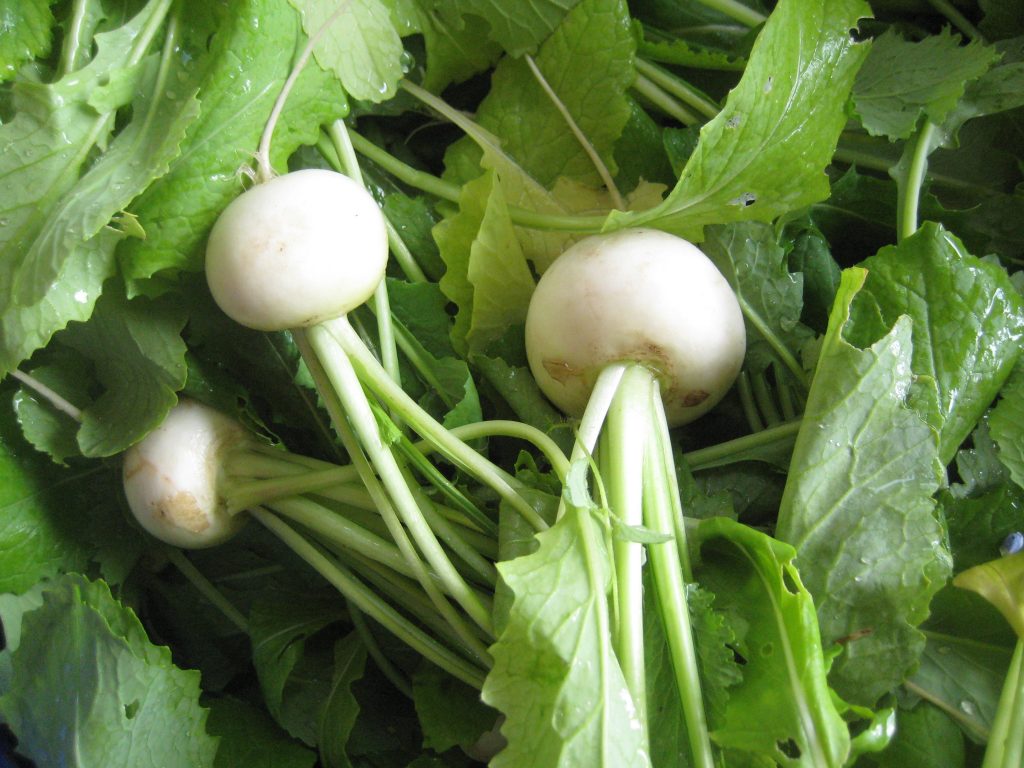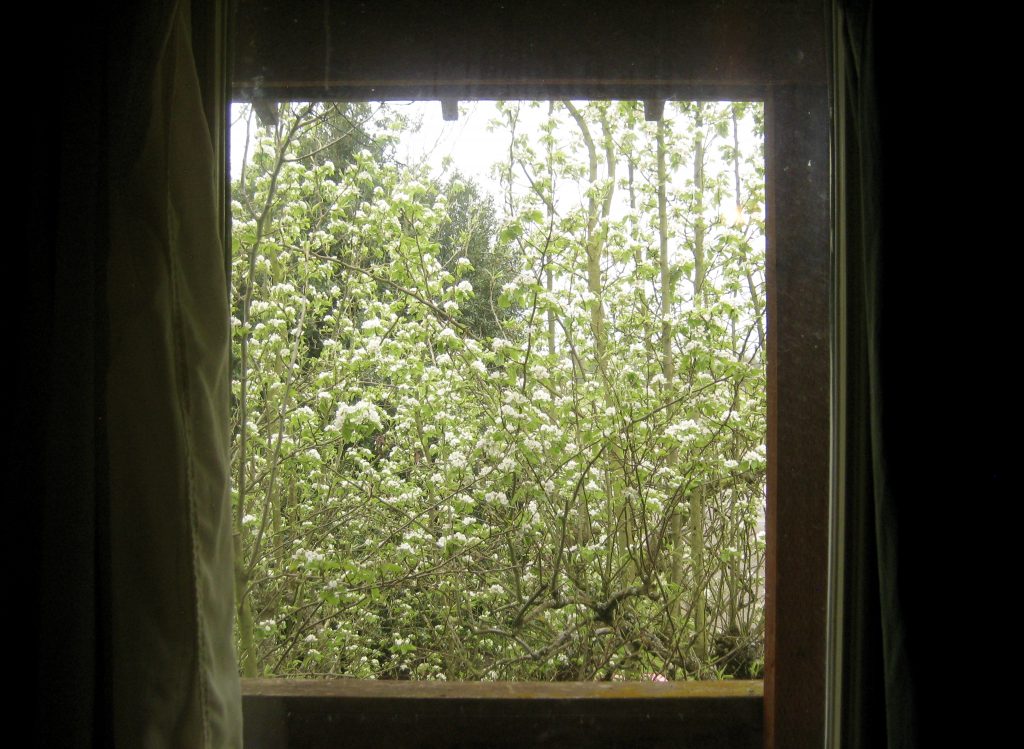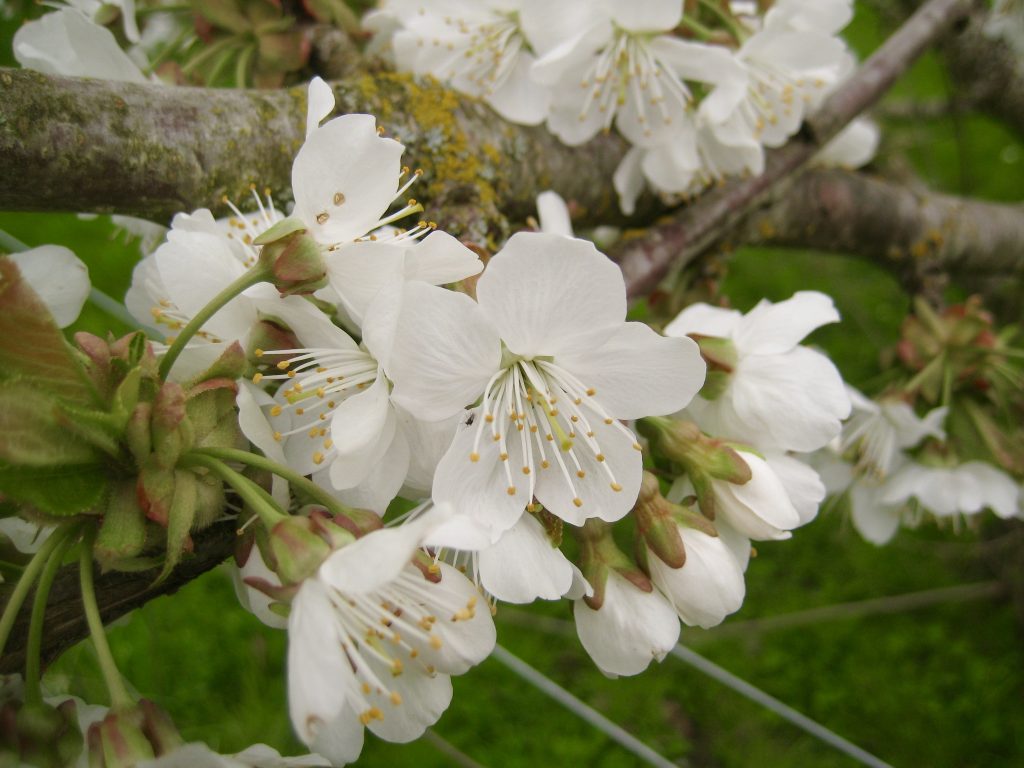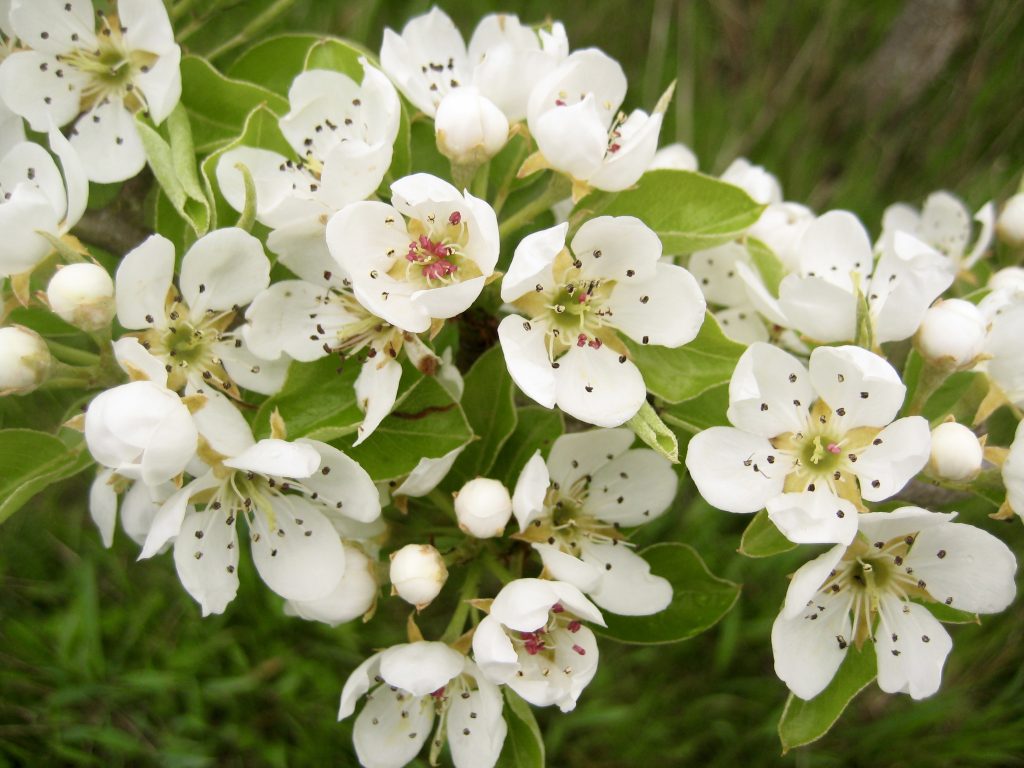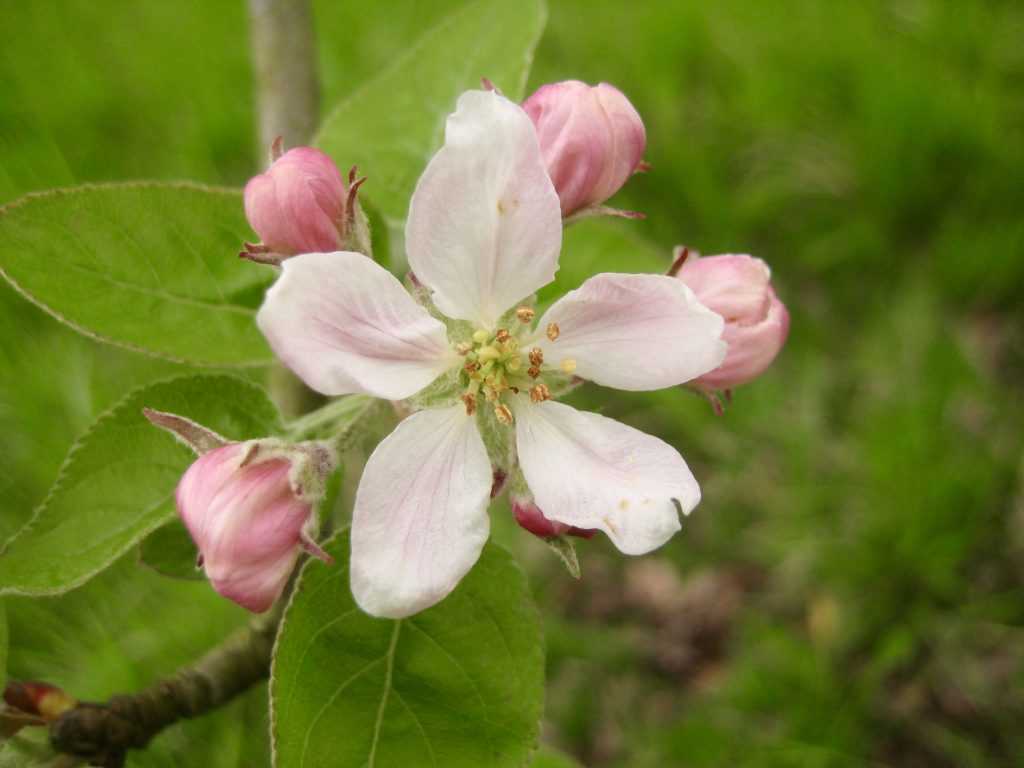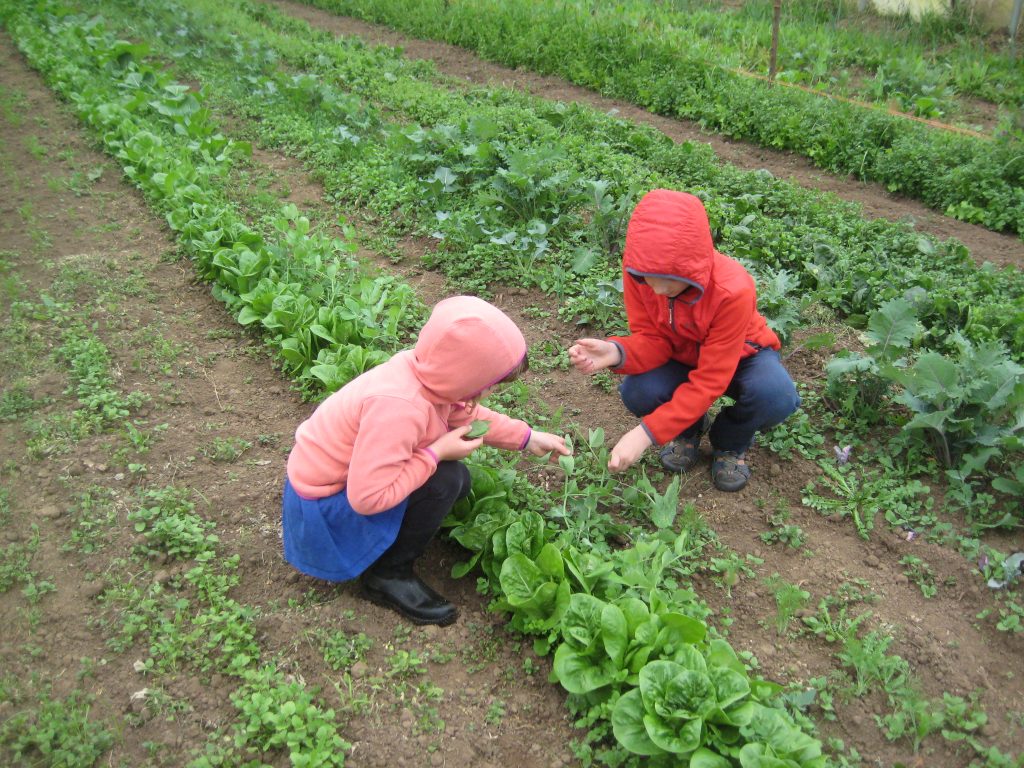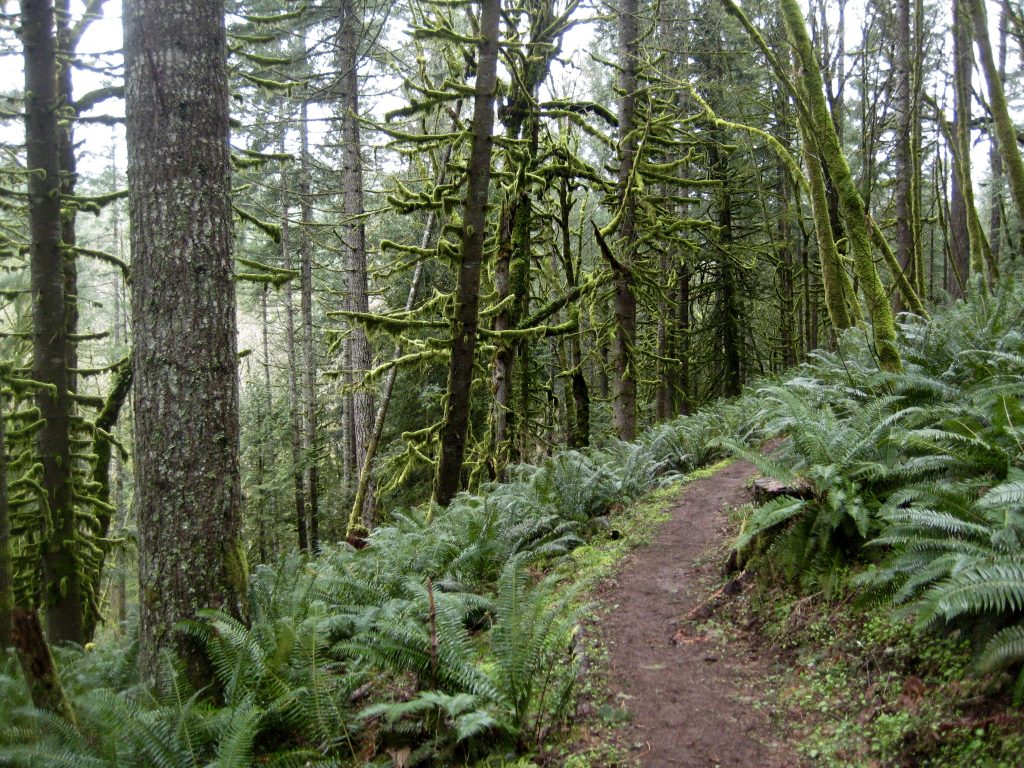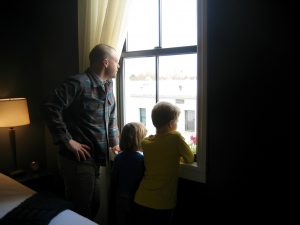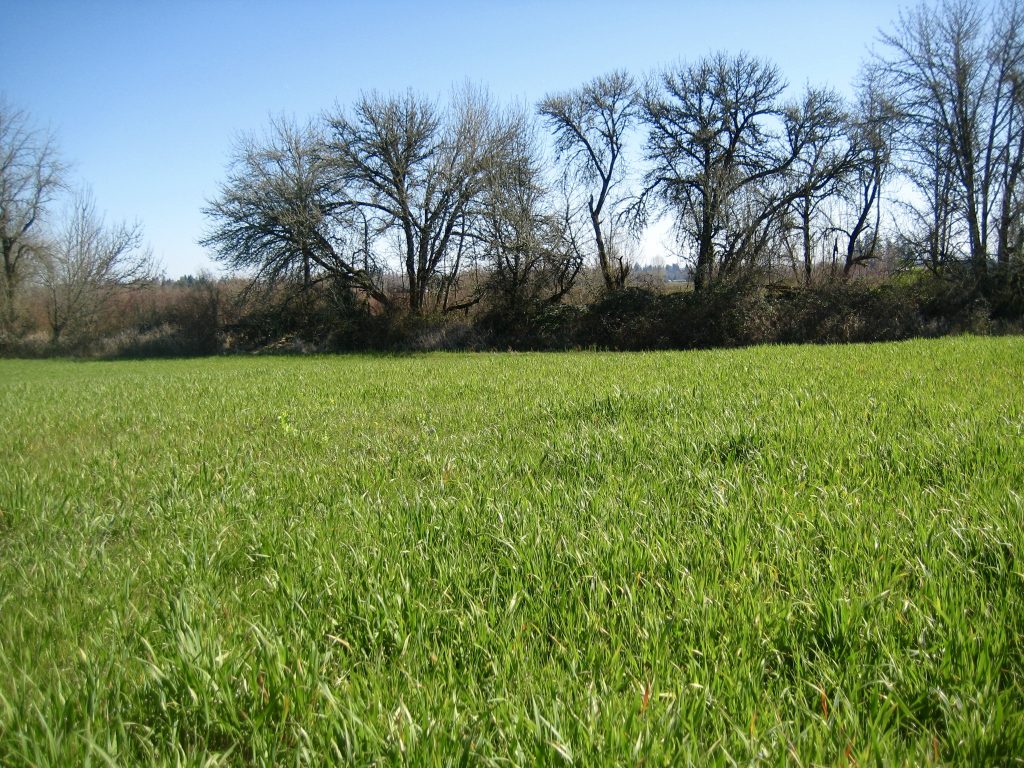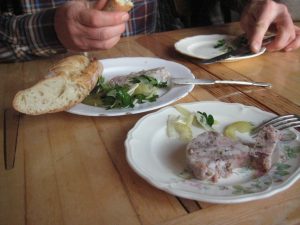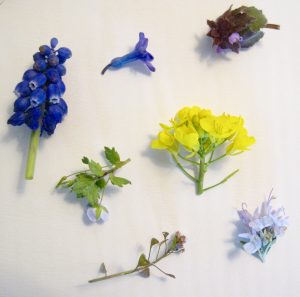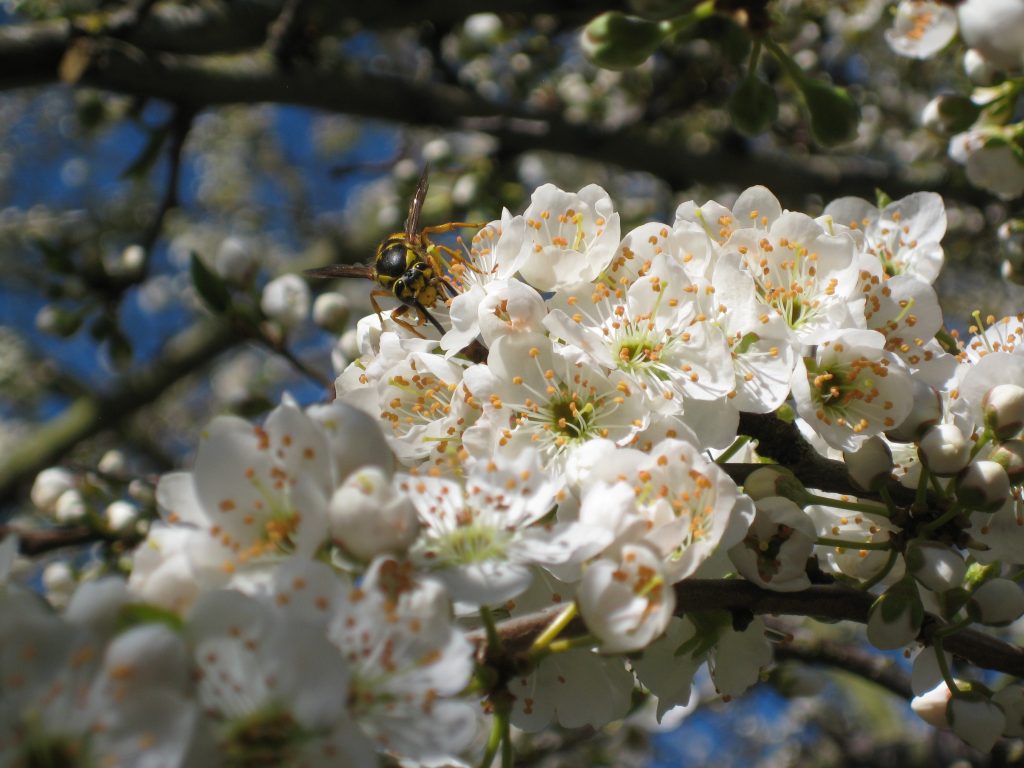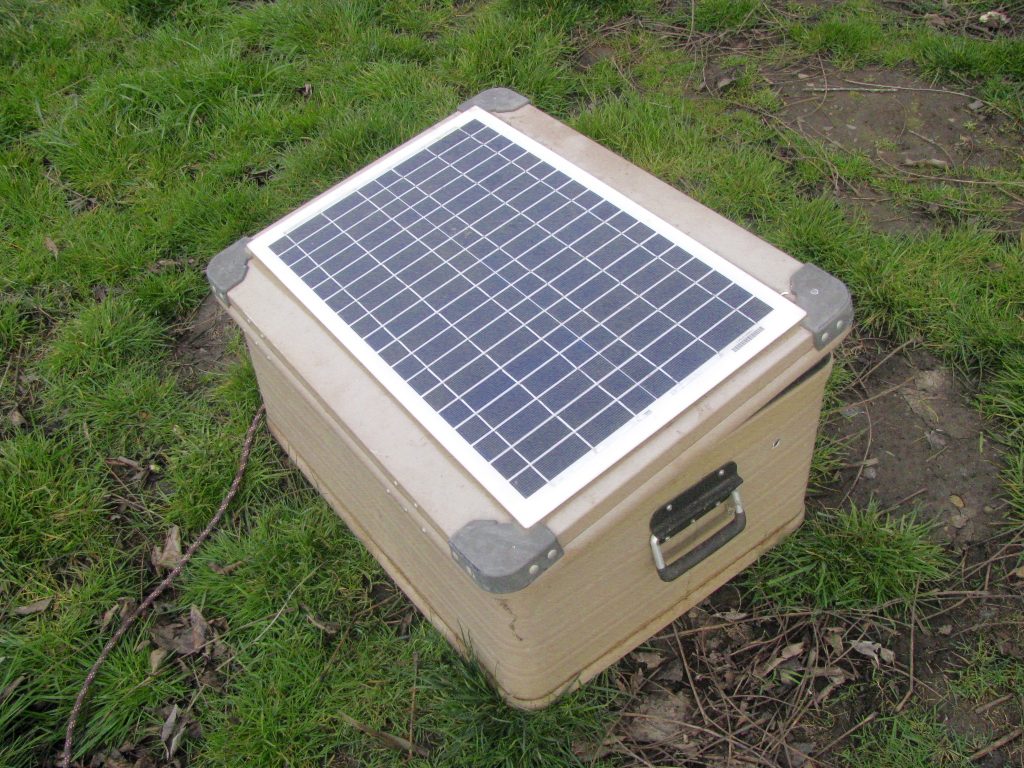
Solar on our farm!
The above photo features the extent of our farm’s solar power at the moment. This panel and box are a former energizer for mobile electric fencing. During the five years that we had livestock on our farm, these energizers were what made it possible for us to pasture our animals in some very big fields, far from any immediate sources of electricity. We would hook one of these up to long sections of net fencing, and the sun itself would keep the interior battery charged and keep our fences nice and hot, keeping our livestock in and predator animals out.
Now, we’ve rigged this panel up for a different purpose. We keep it around for emergency purposes, when our home might lose electricity for a long period of time (always planning for “The Big One,” you know!). Casey purchased an inverter so that we can convert the DC power to AC, and we can plug in various devices. We could use this set-up to charge our cell phones and computer and (on a sunny day) even operate a crock pot!
But, we were recently contacted by a solar power company, ForeFront Power, about majorly upping the solar presence on our farm. Apparently, some of our land is a potentially suitable spot for a larger scale solar installation, and they wrote offering to rent the land from us for that purpose.
You may have heard of such installations, because they are a hot topic here in Yamhill County right now. On March 22, the Yamhill County Planning Commission will hear testimony on a proposed ban on solar generation facilities on prime farmland (parcels comprised of primarily Classes I-IV soils). We received notice of the proposed ban just a short time before receiving the rental offer, and we’ve been thinking and talking about the role of solar on the farm ever since. Is it a compatible use of farmland? How would such installations affect the long-term conservation of farmland for future use? What impacts would they have on farms and neighbors?
These are big questions! In my gut, I wasn’t feeling like an outright ban was the right answer, but I also didn’t feel like I had all the information about the installations either. Casey and I have worked hard on farmland conservation issues in the past, and so I wanted to listen to the voices supporting the ban, which includes many parties we’ve worked with closely on other land-use questions. I listened to their concerns carefully, which left me wanting more information.
As an environmentalist, I feel like I’ve been waiting my whole life for solar power to finally be affordable enough to become a real presence in the energy market. Oregon’s current sources of power are not considered renewable. The coal power plant at Boardman is scheduled to be closed in 2020. Oregon’s dams are aging and filling with silt and are increasingly seen as very problematic for key wildlife habitat. As someone who is relatively young and facing the reality of climate change well within in my lifetime, I feel so ready to embrace clean, renewable power for Oregon (and beyond!). So it’s been very confusing (and quite frankly upsetting) to see solar power arrive in Yamhill County in seeming conflict with farmland conservation … to see its arrival instill fear rather than a relieved hearty welcome, even by other environmentalists! I really needed to better understand the situation.
So, I decided to contact Forefront Power, the people who offered to rent our land. And, just so you know upfront, we are not renting any land to them. When they did their assessment, they didn’t take into account whether land is in the floodway — ours is, making it an unsuitable site. Nonetheless, I had their info on my desk, and I figured they could probably answer a lot of my questions as well as anyone. I spoke with Land Development Manager Nate Butler on the phone yesterday, and I wanted to share some of the information I learned from him.
The big caveat here is that of course Butler represents one of the companies hoping to build solar power generation facilities on farmland here in Yamhill County. So, he’s not an unbiased source of information if one is looking for opinions. But I figured that his intimate knowledge of the specifics was something I was lacking in my understanding of the situation.
The other limitation of this information is that it only represents the answers of one solar company, and there are others working in Yamhill County too. But, it’s a start, and I learned more than I knew beforehand.
So, with those caveats in mind, here are the questions I asked and a summary in my own words of Butler’s answers:
How are these solar panels installed? What is the physical set-up on the land?
Butler explained that part of ForeFront Power’s model is to keep costs down as much as possible for their installations. So, they look for land that is already cleared and relatively level to begin with. Topsoil is not graded or removed. Steel posts are driven into the ground in rows (no digging or concrete footings), onto which a rail is mounted. Solar panels are mounted onto those rails. In one style of installation, those solar panels would be mounted to rotate through the day to catch the sun (so facing east at sunrise and tracking the sun to the west at sunset). So that they don’t shade out other panels, the rows are spaced about 15 to 20 feet apart.
A fence is installed around the site for safety and security purposes. An inverter is also installed on the site to convert the electricity from DC power to AC for the grid. This equipment does require a concrete pad.
Alleyways are kept in a cover of some kind, such as grass or other vegetation easy to maintain. Butler pointed out that dust is bad for solar panels, so preventing bare soil is a priority for them. They also avoid using gravel because it costs much more than a vegetative cover (both to lay down initially and to remove after the installation).
The eventual removal of all parts of the installation at the end of the lease are included in the initial installation cost.
[I want to add: If you drive around Yamhill County today, you will see older existing installations that do not fit this particular model. There are some with aggregate on the ground, for example. Clearly not every company has worked from the same exact plan. However, it is also my understanding that Yamhill County is requiring all new installations to be more conservation minded through the use of conditions of approval.]
Is there any contamination risk to the soil?
Butler said that the panels themselves contain no liquid chemicals or other potential contaminants. The panels are made out of crystalline silicon—either monocrystalline or polycrystalline. The panels and inverters have electronics in them, which like all electronics (computers, phones, etc.) will have small amounts of metals and other components. However, all electronic components are sealed in the equipment. No other liquids are stored on site.
What is the typical lifespan of an installation?
Leases are typically for 20 years, because that is the typical length of an energy contract. The lifespan of the equipment can be a bit longer and leases have the potential to be extended. At the end of the lease, the company removes all parts of the installation so that the land can be farmed again.
Why install on farmland at all?
ForeFront Power looks for a few factors when selecting a site: relatively flat ground that is already clear. The site also needs to be adjacent to three-phase power lines, which are common near irrigated farmland (irrigation pumps are often three-phase).
Why not lower quality farmland?
Butler said that farmland classed lower than IV is often categorized that way in part because it is steeply sloped or very rocky or extremely wet — all of which pose burdens to an installation. Such land is rarely irrigated too, making it less likely to be adjacent to three-phase power.
Why not just put solar panels on roofs and along roadways and in abandoned industrial areas?
This question was a bit beyond the purview of Butler’s job since he works to develop a particular model.
However, we talked through the cost of different kinds of installations. Butler explained that rooftop installations are more expensive because there are certain fixed costs involved with any installation, and so the smaller the installation the more expensive it is for the power produced. He also explained that if a roof or roadway isn’t oriented toward south, the efficacy of the panels is decreased.
I did some of my own research on this question, curious about the energy potential of big box stores in particular. I found a publication about rooftop solar panels called “Solar on Superstores,” published in 2016 by Environment America. The publication makes the case for why big box stores themselves would benefit from installing solar panels. On average, according to the study, a big box store can offset its own electricity use by 42%.
Are these installations subsidized by the government?
Butler said that solar installations receive a 30% tax credit (the Investment Tax Credit), which will expire in 2020. Butler noted that all sectors of the energy industry receive some subsidies and public funding in some form.
Who owns ForeFront Power?
ForeFront Power is owned by a Japanese company, Mitsui.
Where will the electricity produced go?
Some people have expressed concern about energy produced in Yamhill County be used elsewhere. Butler said that because of limitations of the grid itself and the scale of the installations, the power would all be delivered locally. ForeFront Power works with a new program called the Community Solar Model that allows individual parties to choose to buy solar.
What’s to stop all of Yamhill County’s best farmland from being turned into solar installations?
[I want to add my own note here before sharing my summary of Butler’s answers. Right now the state of Oregon limits solar installations to 12 acres on Exclusive Farm Use zoned land. Also, already such installations have to go through a conditional use permit process with Yamhill County, which is an extensive process involving neighbor input. When Yamhill County approves such permits, they also have the ability to place additional conditions on the project in order to meet the county’s own conservation goals that might exceed those of individual companies. For example, requiring a company to use a vegetative cover rather than aggregate cover if that had been their plan. Butler offered further insight into existing limitations on these kinds of installations …]
Butler explained that the grid itself is a limitation of how many such installations can be built in Yamhill County. They need to be installed adjacent to lines with three-phase power, which does not exist in all parts of the county. Also, they need to be installed within two miles of a substation, and each of the existing substations in the county could probably handle one (or maybe two) such installations.
Because of their relatively small size (maxed at 12 acres), these installations do not produce enough electricity to justify upgrading such infrastructure. Butler estimated that, given these limitations, he didn’t expect there to be more than 300 acres of such installations in Yamhill County.
How much electricity do these installations produce?
A 12 acre installation would be 2 megawatts. In Oregon, Butler estimated that this amount of solar panel electricity potential would meet the energy needs of 200-400 homes.
I wanted to get a sense of the overall energy potential for Yamhill County if the solar companies maxed out the existing available land and infrastructure, so I used Butler’s 300 acre estimate to do some “ag math.” “Ag math” is what Casey and I call the math we use to estimate yields for certain plantings and then income potential. It’s always pie-in-the-sky, because actual yields inevitably vary, but it helps us envision our planning to some extent.
So, using ag math, I figured that 300 acres would equal about 25 2 megawatt installations, each producing the energy for 200-400 homes. So, 25 x 200-400 = 5,000-10,000 homes that could be powered by solar energy. According to the last census, there were 35,000 households living in Yamhill County. So, based on this rough “ag math,” 300 acres of Yamhill County land could produce up to one-quarter of the county’s households’ power.
That’s the extent of my Q & A with Butler. And, I just want to point out again that our family has no financial ties with ForeFront Power (or any solar company), nor do we intend to in the future. We have not financial stake in the outcome of the ban, either way. My purpose of pursuing this conversation was because of my own curiosity and my desire to better understand what feels like a surprisingly complex situation.
I’m still chewing on all of this, preparing for the March 22 hearing on the topic before the Yamhill County Planning Commission.
Given these answers, it does not seem to me as though installations (such as these) pose a threat to long-term farmland conservation in Yamhill County. None of the practices qualitatively differ from regular approved farming practices used throughout the county For example, pounding stakes for trellises, installing fencing, not using the native soil for production purposes, and pouring a concrete pad for some part of an operation or farm building are all normal farming practices seen throughout the county on farms of different kinds.
In the short-run, land put into solar installations will be removed from traditional agricultural production, which could be a concern for farmers who worry about increased competition for land access. However, if Butler is accurate about the limitations, we’re talking about potentially 300 acres, spread on parcels distributed throughout the county. To put this in perspective with other farmland conservation issues in Yamhill County, the gravel quarry that was approved on the south end of Grand Island (one of two approved on the island) represents 224 acres of farmland that would be permanently removed from production by the end of the quarry’s operation.
I should also address the question of aesthetics. I have heard that some people think solar installations are unsightly and sully the agricultural landscape. This is a highly subjective opinion, so a hard one to verify one way or the other. I do think that people unfamiliar with the agricultural industry can sometimes unknowingly foster a simplistic, romantic vision of what agriculture is. It’s important to remember that part of why “right to farm” laws exist in Oregon is because many normal, approved agricultural practices are semi-industrial and have affects that might be deemed unpleasant (noise and dust, for example). If you look closely as you drive along Yamhill County’s rural roads, you will see that semi-industrial nature present throughout our landscape: pole buildings, large equipment yards, packing sheds, security lighting, fences, and more. These non-pastoral scenes are an integral part of agriculture, necessary for supporting farm businesses, and therefore a real part of our landscape. The majority of our rural landscapes are beautiful too — so beautiful! But being beautiful is not the first purpose of farmland, just a side benefit of much of agricultural production.
That being said, because beauty is so subjective, I have to admit that I don’t find the existing installations in Yamhil County unsightly — aside from where I have seen the application of gravel on the ground. (And, I am a person who loves greenery and nature!). Aesthetically, I love the patchwork quilt of different patterns and colors that make up our rural landscape. To me, the tidy lines of panels fit right in next to tidy rows of trellised berries and lines of hazelnut trees. Plus, when I see them, I immediately think: Innovation! Sustainability! The future!
I remember hearing author and farmer Kristin Kimball talk once about the solar panels that she and her husband installed on their farm in New York. She said that she wanted them placed far away from their house and farmstead because she was sure she would find them hideous and ugly. Instead, she found them surprisingly beautiful and would intentionally walk to the installation to watch the meter run on sunny days.
To me, an outright ban seems like an out-sized solution when it’s possible there might not even be a problem to be solved at all. Because a ban is a strong approach to land-use, one that Yamhill County has not yet taken for other land uses that permanently remove larger tracts of farmland from production permanently (such as gravel quarries and the landfill). The argument for not having a ban for those is that they go through a rigorous process before being approved, and that ultimately they are resources that proponents say benefit our community too (in the form of aggregate for construction and road base and waste disposal). So, it seems that having some benefit in those situations has been seen as outweighing the permanent loss of farmland.
In the case of the solar installations, there is no evidence of permanent farmland loss, but is there benefit to our community? Enough electricity to power 5,000-10,000 home in Yamhill County seems like a significant benefit, especially in a county that currently has no significant power generation sources of its own. In the event of a disaster that takes out major transmission lines, decentralized sources of power generation could function much like our little solar panel at home — they wouldn’t fully replace the former power supply, but perhaps they could help get necessary functions up and running again before everything is back to normal.
Finally, I worry that passing a ban in our ordinances would send a powerful negative message to potential innovative businesses, both within and from without Yamhill County. Are we open to innovation and new ways of thinking about our economic possibilities? Are we excited about businesses that conserve farmland while also bringing new industries to our community? Do we want to participate in solutions for the coming reality of climate change? Or, what? …
Meanwhile, yes, I think solar panels should be put up in many places besides prime farmland! Rooftops! Road sides! Yes! Yes! Yes! I’d love it if the county could even take the lead by installing solar panels on every county-owned building. Casey and I would love to install solar panels on our own roof now that the cost has made them more affordable, and we plan to do some research on whether this makes sense later this summer. (We have trees around our house, so we need to make sure our roof is really a good spot. Not every roof is created equal when it comes to solar energy generation!)
In closing, I want to say that I am publishing this newsletter with some level of trepidation. Right now the solar ban has such wide support among disparate people in Yamhill County that it feels like I’m really putting myself out there by proposing we look at it differently. Again, as I said earlier, the conflict being presented in this scenario (renewable energy vs. farmland!) makes the situation very complicated and pits two of my personal passions against one another. Ultimately, my information gathering on Yamhill County’s specific situation has led me to decide there is not a direct conflict at work in this case. If you’ve actually taken the time to read my entire newsletter, I wonder what you will think now too?
If you have concerns that I haven’t addressed here in my [very long!!!] newsletter, please let me know. I’m still chewing on all of this and am open to further conversation and hearing new evidence.
Meanwhile, we also use the sun to grow vegetables on our farm, and nobody can argue with how awesome that is! Yay for the sun! The original and best source of nuclear fusion energy! Enjoy this week’s vegetables!
Your farmers, Katie & Casey Kulla
~ ~ ~
Meet this week’s vegetables:
- Apples
- Spicy sauerkraut — The spicy version of Casey’s kraut has been so popular that he made it again!
- Radishes — The first of the year! Sweet and tender out of the greenhouses. PLEASE LIMIT ONE BUNCH so that everyone can appreciate these! There will be more to come.
- Cabbage rapini
- Kale
- Chard
- Cabbage
- Winter squash — All the usual types!
- Sunchokes
- Beets
- Carrots

